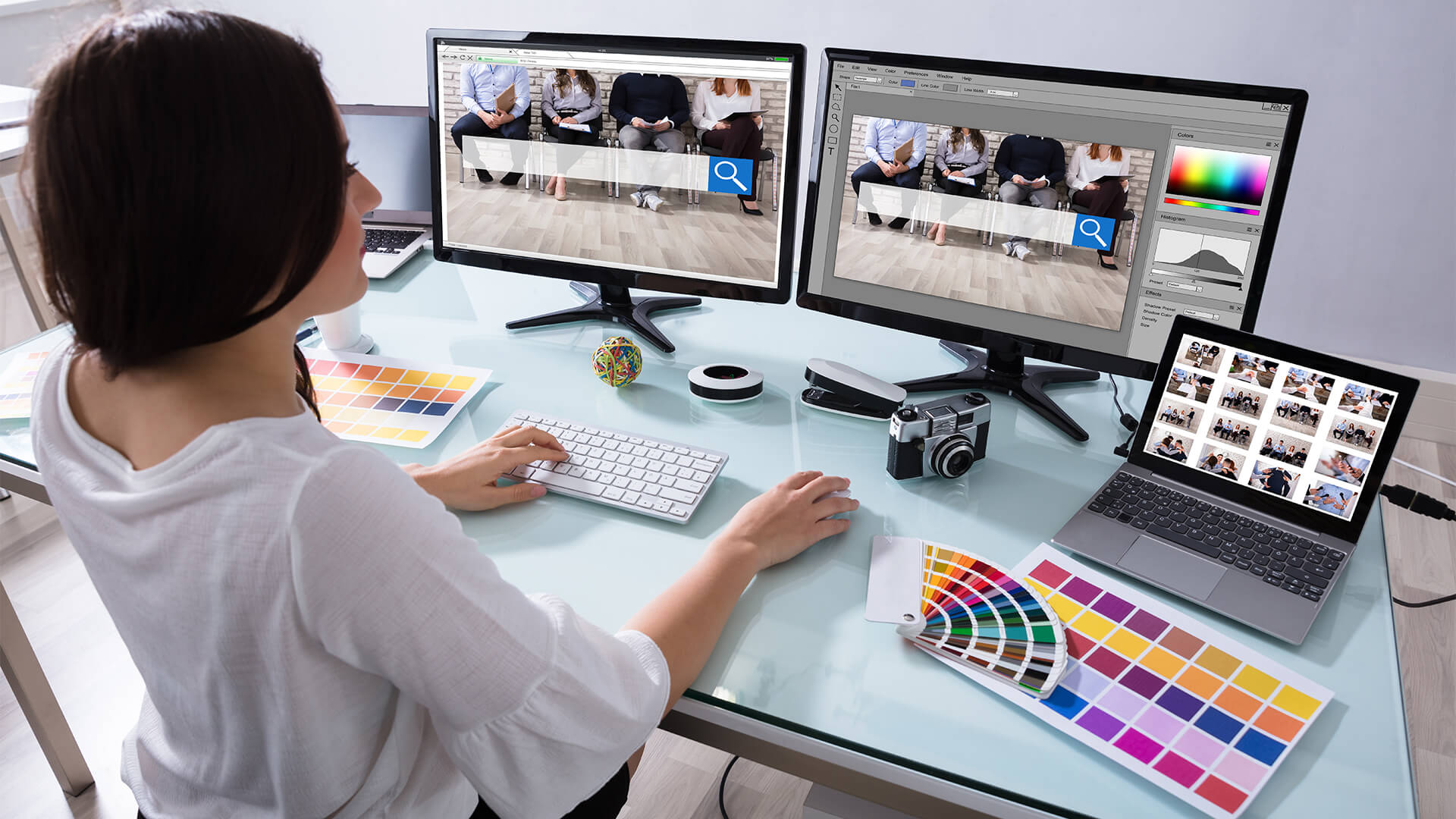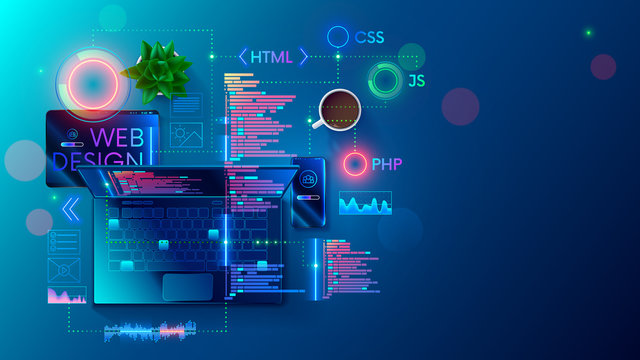Aligned Position Web Design: Building Beautiful and Functional Websites for Your Business
Aligned Position Web Design: Building Beautiful and Functional Websites for Your Business
Blog Article
The Very Best Types of Web Style to Boost Individual Experience and Interaction
In the ever-evolving landscape of digital communication, the efficiency of website design significantly influences individual experience and interaction. Different style methods, such as minimalist, responsive, and interactive layouts, each offer special advantages that can cater to diverse customer needs. Comprehending which kinds of Web layout best serve these objectives can be critical for businesses aiming to improve consumer contentment and retention. The concern continues to be: which design elements really reverberate with customers and foster purposeful engagement? The exploration of these principles exposes critical insights that may redefine your technique to website design.
Minimal Website Design
As digital landscapes end up being significantly cluttered, minimalist website design has arised as an effective strategy to enhancing individual experience. This style philosophy prioritizes simplicity, focusing on essential components while eliminating unneeded disturbances. By making use of ample white space, straightforward navigation, and a limited color palette, minimalist design fosters clarity and directs customer focus to essential web content.
The core principle of minimal website design is to create a smooth communication for users. By reducing cognitive tons, individuals can swiftly realize details without feeling overwhelmed. This straight technique not only improves use yet additionally urges involvement, as site visitors are more probable to explore a site that is easy and aesthetically enticing to browse.
In addition, minimalist style frequently stresses typography and imagery, utilizing these aspects strategically to communicate messages effectively. In significance, minimalist Web style is not simply a trend; it is a thoughtful technique that recognizes the relevance of user-centered style.
Receptive Web Design
In today's diverse digital atmosphere, receptive website design has ended up being essential for creating a seamless user experience across a wide range of gadgets. As individuals gain access to internet sites on smart devices, desktop computers, tablets, and laptop computers, the capability of a web site to adjust its design and material to different screen sizes and resolutions is essential.
Responsive website design uses versatile grids, pictures, and CSS media inquiries to make sure that Web content exists ideally, despite the gadget used. This approach not just improves the visual appeal of an internet site yet likewise substantially enhances usability. Customers are most likely to engage with a website that uses a constant experience, as it eliminates the aggravation of having to focus or scroll excessively.
By adopting receptive design, services can improve their exposure and get to a wider target market. In recap, responsive Web design is an essential technique that enhances customer experience, engagement, and general contentment.
Interactive Website Design
Responsive Web design lays the groundwork for boosting user experience, however interactive website design takes this an action further by engaging individuals in an extra dynamic method - Aligned Position Web Design. By including elements such as animations, clickable models, and real-time responses, interactive Web design mesmerizes customers, attracting them into a richer surfing experience
This method not just fosters involvement but likewise motivates customers to discover content actively as opposed to passively consuming it. Techniques such as gamification, where customers make incentives for completing jobs, can considerably improve the time invested in a site and enhance total fulfillment. Furthermore, interactive look here features can streamline complicated details, making it more enjoyable and digestible.

Incorporating interactive style components can additionally lead to greater conversion rates, as individuals are more probable to engage with a website that proactively includes them. Aligned Position Web Design. Ultimately, interactive Web design transforms customer experiences right into memorable journeys, making certain that visitors return time and once more
Apartment Design
Defined by its minimalistic strategy, level design emphasizes simpleness and capability, removing unnecessary components and concentrating on essential attributes. This design ideology prioritizes functionality, making certain that customers can browse user interfaces with convenience and performance. By using a tidy visual, level style gets rid of the clutter commonly discovered in a lot more elaborate designs, consequently improving individual focus on content and functionality.
The hallmark of level layout depends on its usage of strong colors, straightforward typography, and geometric forms. These components add to a visually appealing interface that is both friendly and modern-day. Additionally, level design promotes a sense of clarity, allowing users to determine crucial activities and information without distraction.
In addition, level design is link particularly reliable in responsive Web style, as its simplicity converts well across various tools and screen dimensions. The lack of elaborate appearances and slopes reduces loading times, which is critical for keeping individual engagement. As electronic landscapes continue to evolve, flat design continues to be an appropriate choice for producing easy to use websites that boost overall experience. By concentrating on vital features, level design not just meets customer requirements but additionally motivates seamless communication, making it an important part of efficient website design techniques.
Flexible Website Design
Flexible website design tailors the user experience by developing multiple taken care of formats tailored to different display dimensions and tools. Unlike responsive layout, which fluidly adjusts a single format, flexible layout employs distinct formats for details breakpoints, making certain ideal presentation on different platforms. This technique enables designers to concentrate on the special attributes of each tool, boosting use by supplying specifically what customers require based upon their context.
Among the main benefits of adaptive website design is its capability to enhance tons times and performance. By serving tailored material and pictures that fit the individual's tool, internet sites can reduce data usage and enhance loading speeds. This is especially beneficial for individuals with slower connections or restricted information strategies.

Furthermore, flexible style helps with an extra regulated and consistent branding experience. Considering that developers develop multiple designs, they can ensure that the visual aspects straighten with the brand's identification throughout different platforms - Aligned Position Web Design. This causes a natural user experience, improving involvement and promoting individual retention
Verdict
Minimal layout cultivates quality and emphasis, while receptive style guarantees versatility across various tools, advertising availability. Collectively, these design comes close to add to the development of easy to use environments that not only boost contentment however likewise drive higher conversion prices, highlighting their important value in contemporary Web style techniques.

Minimalist style cultivates quality and emphasis, while receptive design ensures versatility across different tools, advertising accessibility. Collectively, these style approaches contribute to the development of straightforward settings that not just boost contentment yet additionally drive greater conversion prices, emphasizing their critical significance in contemporary Web layout strategies.
Report this page